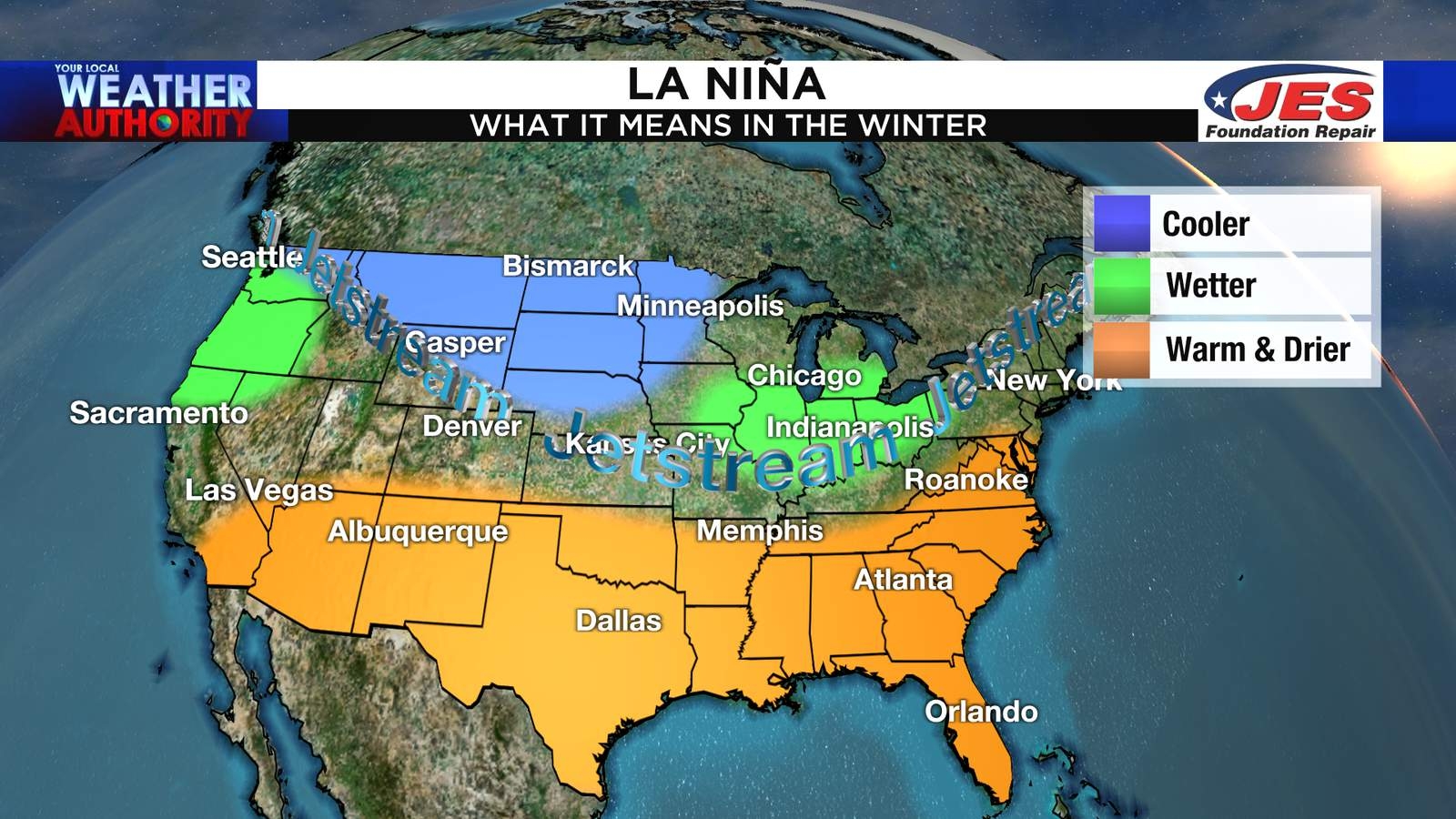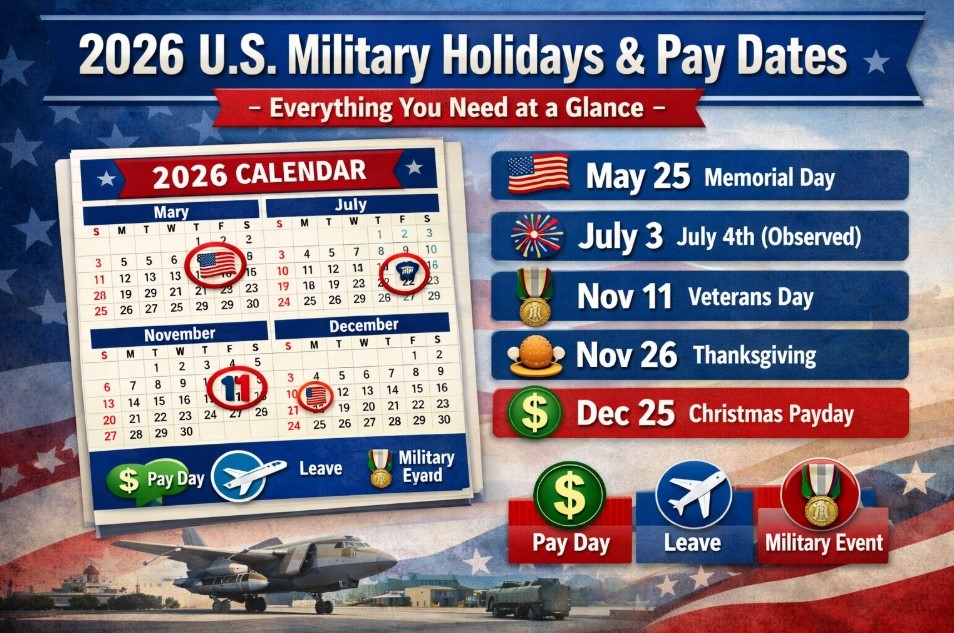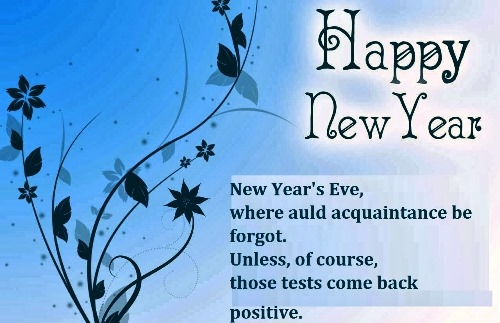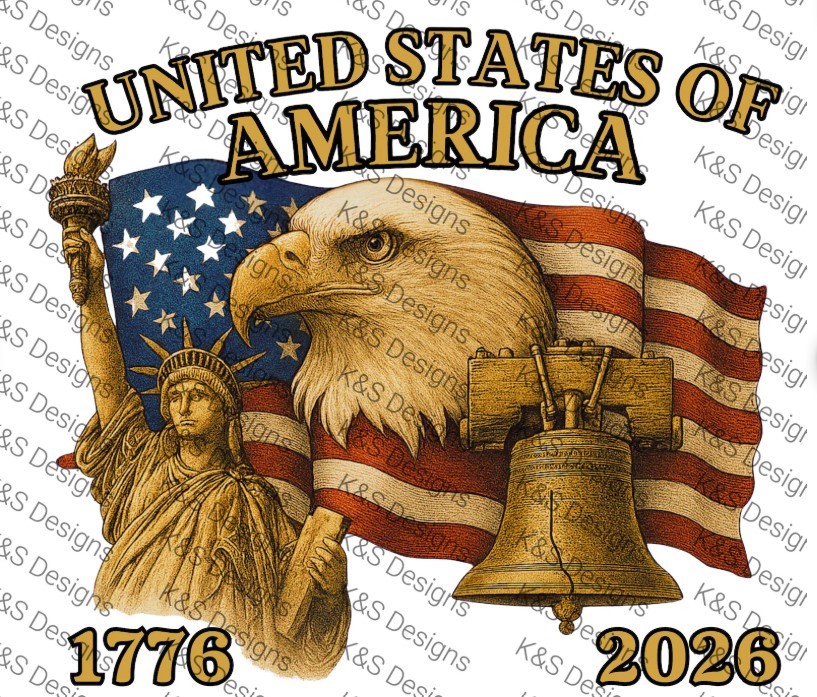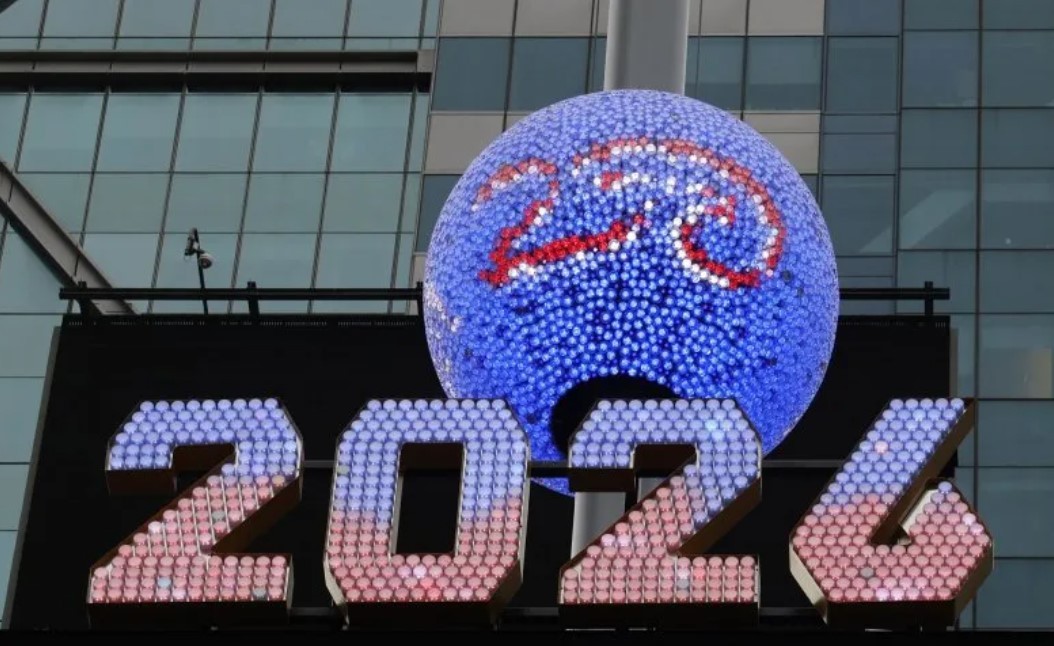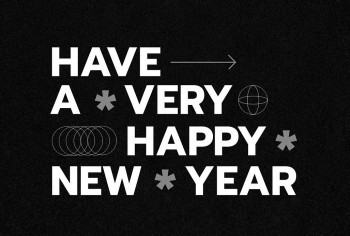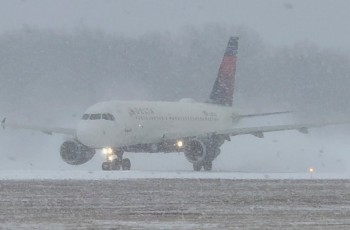U.S Winter Weather Forcast 2021: Cooler North, warmer South, La Nina and Drought
 |
| This U.S. Winter Outlook 2020-2021 map for temperature shows above-average temperatures are likely in the South and below-average temperatures likely in parts of the North. (NOAA Climate.gov, using NWS CPC data) |
Winter Forcast for the U.S in 2020 - 2021: La Nina and drought
Experts at NOAA are forecasting warmer than average temperatures across the southern half of the United States.
According to NOAA’s Climate Prediction Center, Winter for the U.S in 2020 - 2021 will favor warmer, drier conditions across the southern tier of the U.S., and cooler, wetter conditions in the North, thanks in part to an ongoing La Nina. Forecasters at NOAA — a division of the National Weather Service — are also closely monitoring persistent drought during the winter months ahead, with more than 45% of the continental U.S. now experiencing drought.
The ongoing La Niña is projected to bring weather conditions similar to what meteorologists expect across the country during a typical La Niña pattern, but there may be a few subtle differences, Accuweather cites.
“With La Niña well established and expected to persist through the upcoming 2020 winter season, we anticipate the typical, cooler, wetter North, and warmer, drier South, as the most likely outcome of winter weather that the U.S. will experience this year,” said Mike Halpert, deputy director of NOAA’s Climate Prediction Center.
| What is the La Niña? The main reason for a forecast like this has to do with the La Niña, which is described as cooler than average temperatures in the Pacific Ocean. More specifically, this pertains to a strip of ocean off the coast of Perú and close to the equator.
This typically leads to a less active storm track in the eastern U.S., which is a big part of why hurricanes have been able to thrive this season. There hasn’t been any harsh wind from neighboring storm systems to tear them up. We reconstructed a map from the North Carolina Climate Office to show what a typical La Niña looks like across the U.S. during the winter months. The Rockies, Northern Plains and Great Lakes are typically favored for snowier winters. |
Drought
Currently, large areas of drought extend over the western half of the U.S., with parts of the Northeast also experiencing drought and near-record low stream flows. With a La Nina climate pattern in place, southern parts of the U.S. may experience expanded and intensifying drought during the winter months ahead.
Widespread, ongoing drought is currently in place across the western half of the continental U.S. as a result of the weak Southwest summer monsoon season and near-record-high temperatures. Drought is also present in parts of the Northeast, Ohio Valley, Hawaii and Alaska. The ongoing La Nina is expected to expand and intensify drought across the southern and central Plains, eastern Gulf Coast, and in California during the months ahead. Drought conditions are expected to improve in the northern Rockies, Northwest, New England, Alaska and Hawaii over the coming months.
MAP OF U.S. WINTER WEATHER FORECAST 2020-2021
Almanac’re predicting a light winter for the United States, with warmer-than-normal temperatures in the forecast for a large part of the country.
Uncommonly chilly temperatures will be limited mostly to the western states and northeastern New England. Specifically, winter will be colder than normal in Maine; the Intermountain, Desert Southwest, and Pacific Southwest regions; and eastern Hawaii and above normal elsewhere.
On the precipitation side of things, expect “wet” to be a wintertime constant, with rain or average to below-average snowfall to be the standard throughout most of the country.
Specifically, precipitation will be below normal from Delmarva into North Carolina; in the southern Appalachians, Georgia, and Florida from the Ohio Valley westward to the Pacific and southward to the Gulf and Mexico; and in western Hawaii and above or near normal elsewhere.
Snowfall will be greater than normal in the Northeast, Wisconsin, Upper Michigan, the High Plains, and northern Alaska and below normal in most other areas that receive snow.
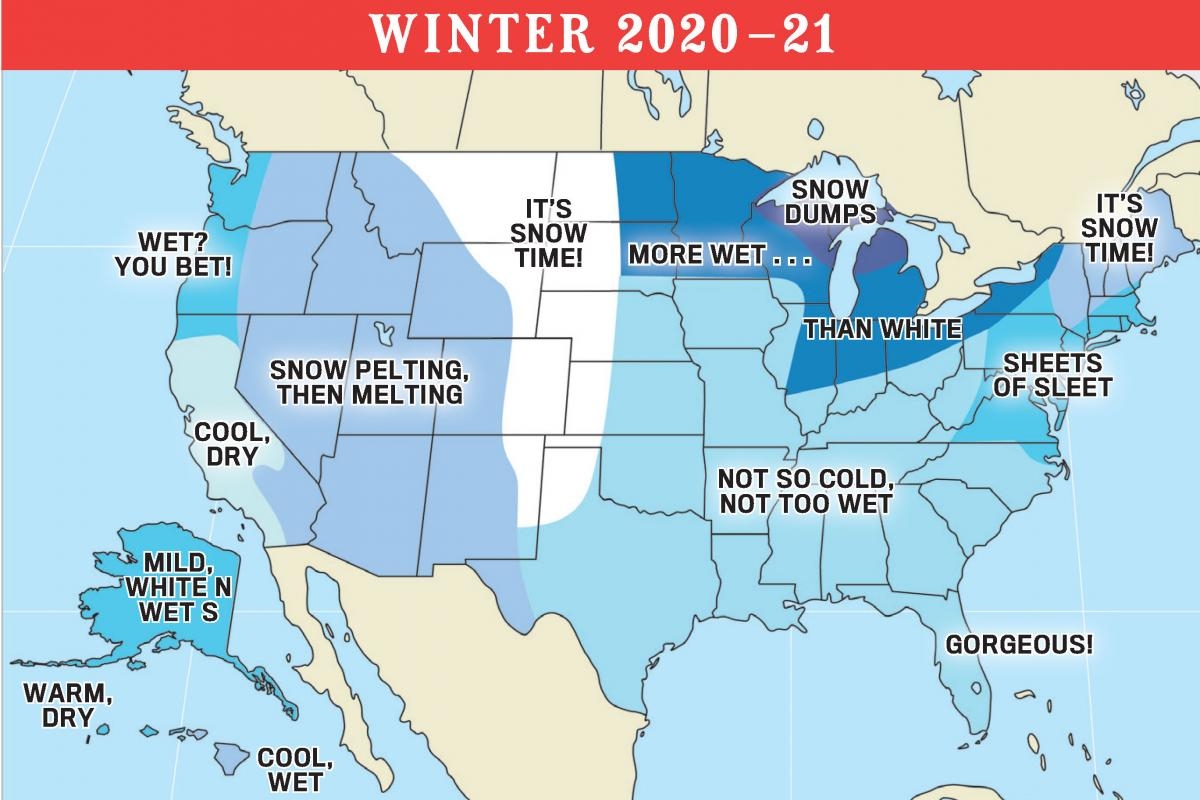 |
| Almanac predict that recent warming trends will dominate in the eastern and northern parts of the United States in the coming winter, with below-normal average temperatures limited to the western portion of the nation. |
| Temperature of U.S winter 2020-2021 The greatest chances for warmer-than-normal conditions extend across the Southern tier of the U.S. from the Southwest, across the Gulf states and into the Southeast. More modest probabilities for warmer temperatures are forecast in the southern parts of the west coast, and from the Mid-Atlantic into the Northeast. Above-average temperatures are also favored for Hawaii and western and northern Alaska, NOAA predicted. Below-normal temperatures are favored in southern Alaska and from the northern Pacific Northwest into the Northern Plains, with equal chances for below-, near- or above-average temperatures in the remaining regions. |
Cold and Snowy
If you love the cold of winter, you’re going to love our forecast if you live in the northern half of the country. Our long-range forecast is calling for a cold winter with normal to below-normal temperatures in areas from the Great Lakes and Midwest, westward through the Northern and Central Plains, and Rockies, according to Farmersalmanac.
Remember last year’s almost snow-free winter in the Northeast? Well, this year our prediction is very different, with the possibility of a blizzard hitting the Mid-Atlantic and Northeast states during the second week of February. This storm may bring up to 1-2 feet of snow to cities from Washington, D.C. to Boston, Massachusetts!
The Great Lakes region will get its fair share of snow but expect above-normal snowfall if you live in the western Dakotas, northern portions of Colorado and Utah, as well as Wyoming, Montana, Idaho, and central and eastern sections of Washington and Oregon.
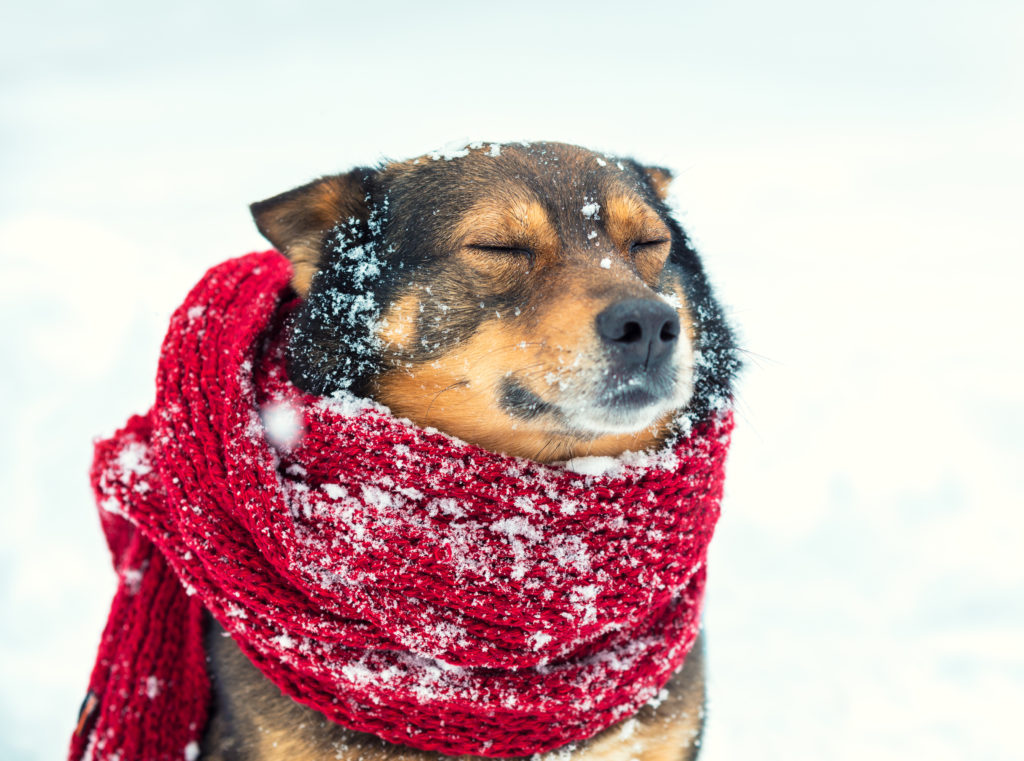
Eastern Ohio and Kentucky can expect a significant snowfall in the beginning of February, and the Southern Plains are on target to receive copious amounts of snow, sleet, and rain later on that same month.
And for those living in the eastern half of the country, you may get clobbered during the final week of March, but what falls from the sky will depend on where you live—this storm will track from the nation’s midsection to central New England and bring a significant late-season snowfall to the north of its track, and showers and thunderstorms to the south.
Take a look below at a complete region-by-region of U.S winter weather forcasted- by AccuWeather
September 2020, AccuWeather’s team of long-range forecasters, led by Senior Meteorologist Paul Pastelok, released its annual predictions for the upcoming winter season.
Winter weather in Northeast, Midwest
The upcoming winter could bring some echoes of last winter with only a handful of Arctic outbreaks and very little snow to speak of along the Interstate 95 corridor.
“Another overall mild winter is possible for much of the eastern U.S.," Pastelok of AccuWeather said, referring how temperatures will compare to the 30-year averages in many places. However, he expects "near-normal snowfall across much of New England.”
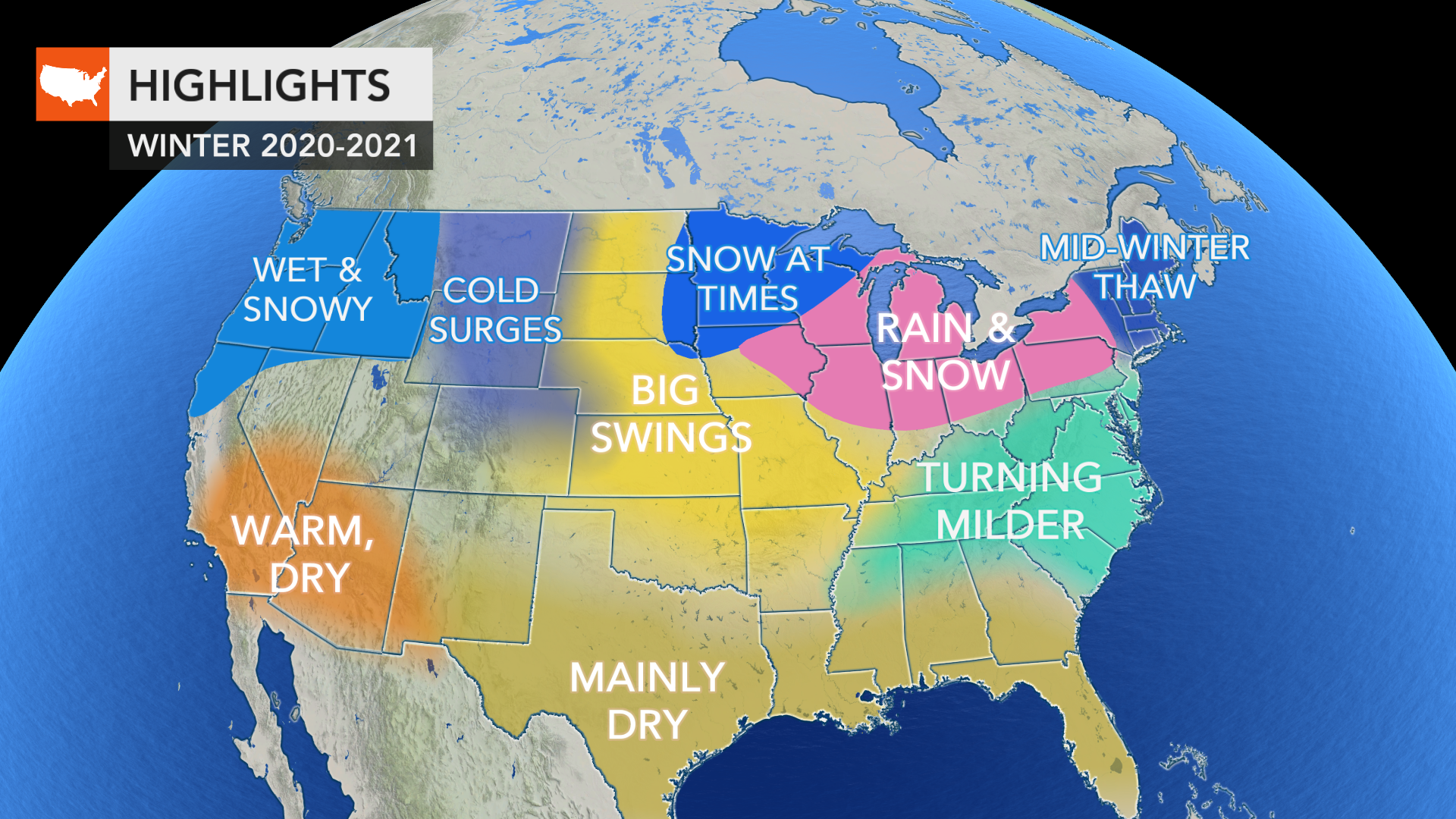
And, it's worth noting, the entire season will not be mild all the way through. Instead, the season will be bookended by cold and snowy conditions with a pause in the wintry weather in the middle of the season.
“An early-season chill is expected in the Great Lakes, Ohio Valley into the Northeast,” Pastelok said.
The first waves of chilly Arctic air will set off rounds of lake-effect snow downwind of the Great Lakes, as well as bring opportunities for snow in some of the bigger cities across the region heading into the holiday season.
“There is a good chance for a white Christmas in Chicago, perhaps around 30-35% chance at this point,” Pastelok said. “For Pittsburgh, much of the lake-effect snow could fall north ofthe city and it may be tough to keep snow on the ground. But from this far out I give a15-20% chance for a white Christmas in Pittsburgh, but, still, there is a chance.”
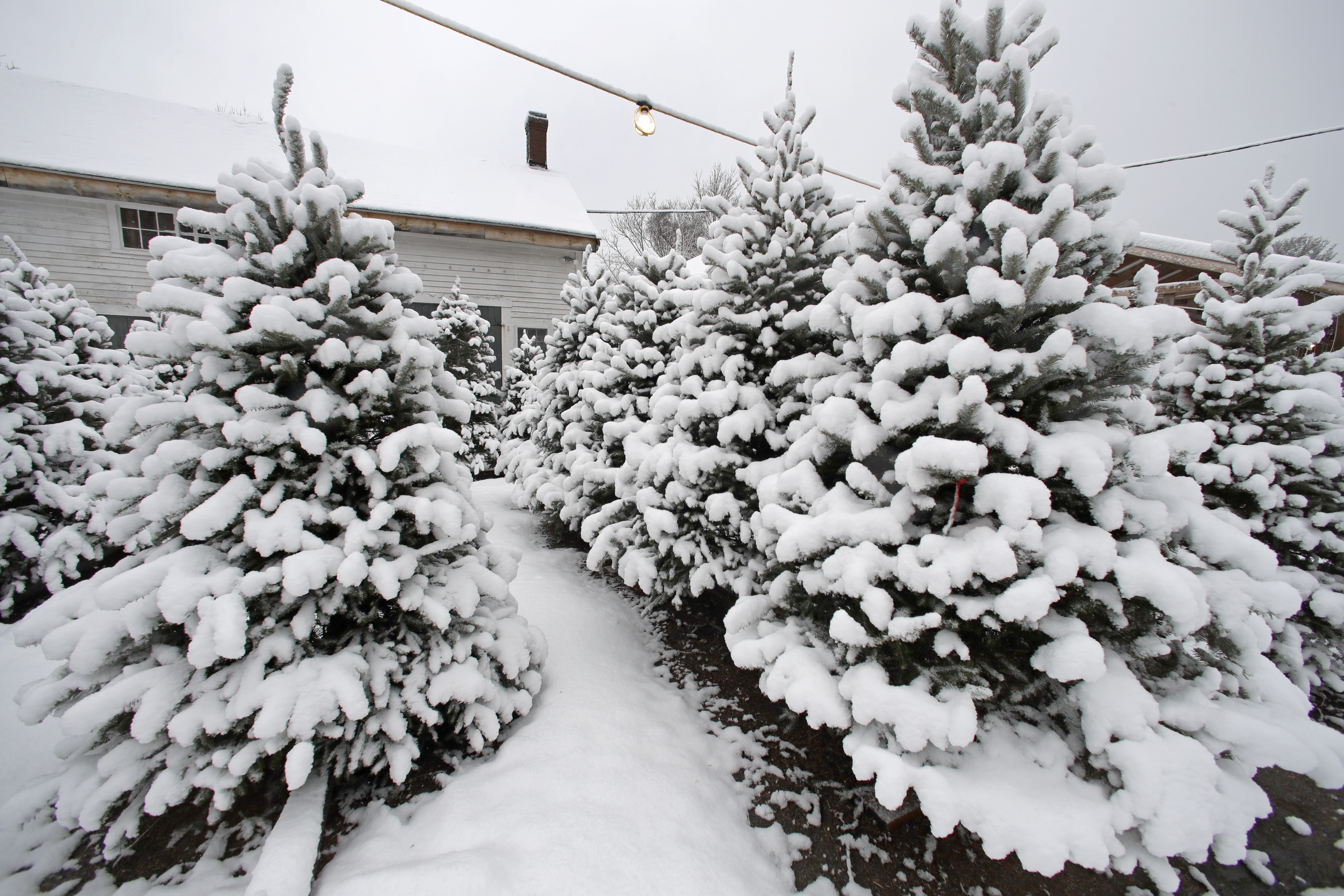
Christmas trees laden with freshly fallen snow are displayed for sale at Boston Hill Farm, Wednesday, Dec. 11, 2019, in North Andover, Mass. (AP Photo/Elise Amendola)
After the calendar flips to 2021, Old Man Winter will eventually loosen his grip on the region.
“A big turn" is expected around the middle of the season as temperatures are predicted to rise and snowfall should decrease, Pastelok said, due in part to the strength and positioning of the polar vortex. More on that later.
But as the Northeast sees a break in the cold and snow, folks across the Great Lakes and Midwest will want to brace for some bitter spells of wintry weather.
There will be a favorable storm track mid-season for the Midwest and Great Lakes, leading to above-normal precipitation and a few heavy snowfall events, Pastelok explained.
The storm track will eventually shift eastward during the latter part of the season, bringing the potential for some big coastal snowstorms.
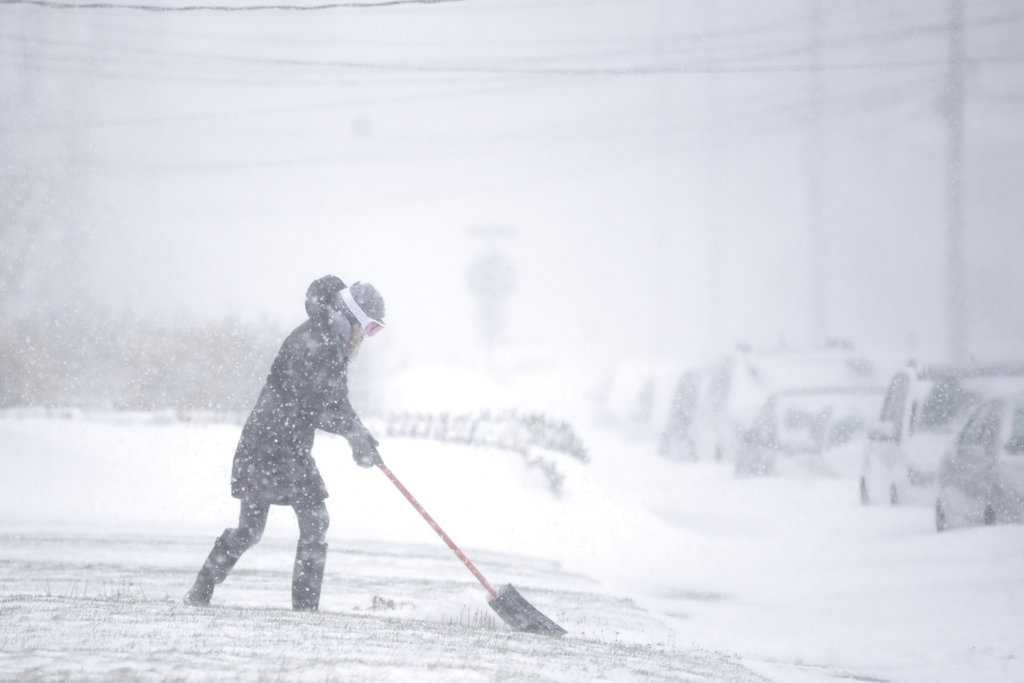
A woman shovels a yard during a snowstorm, Thursday, Jan. 4, 2018, in Ocean Grove, N.J. (AP Photo/Julio Cortez)
A period of stormy and snowy weather may occur later in February or March as nor'easters can develop and impact the region, Pastelok cautioned.
Even with the potential for some big snow events, the season as a whole is forecast to finish with near- to- below-average snowfall for much of the Northeast and Ohio Valley. In contrast, the Upper Midwest could pick up near- to- above-normal snowfall. Winter storms could dish out a whopping 55 to 65 inches of snowfall this season in Minneapolis, which sees 54.7 inches of snow on average based on data from 1991 to 2020.
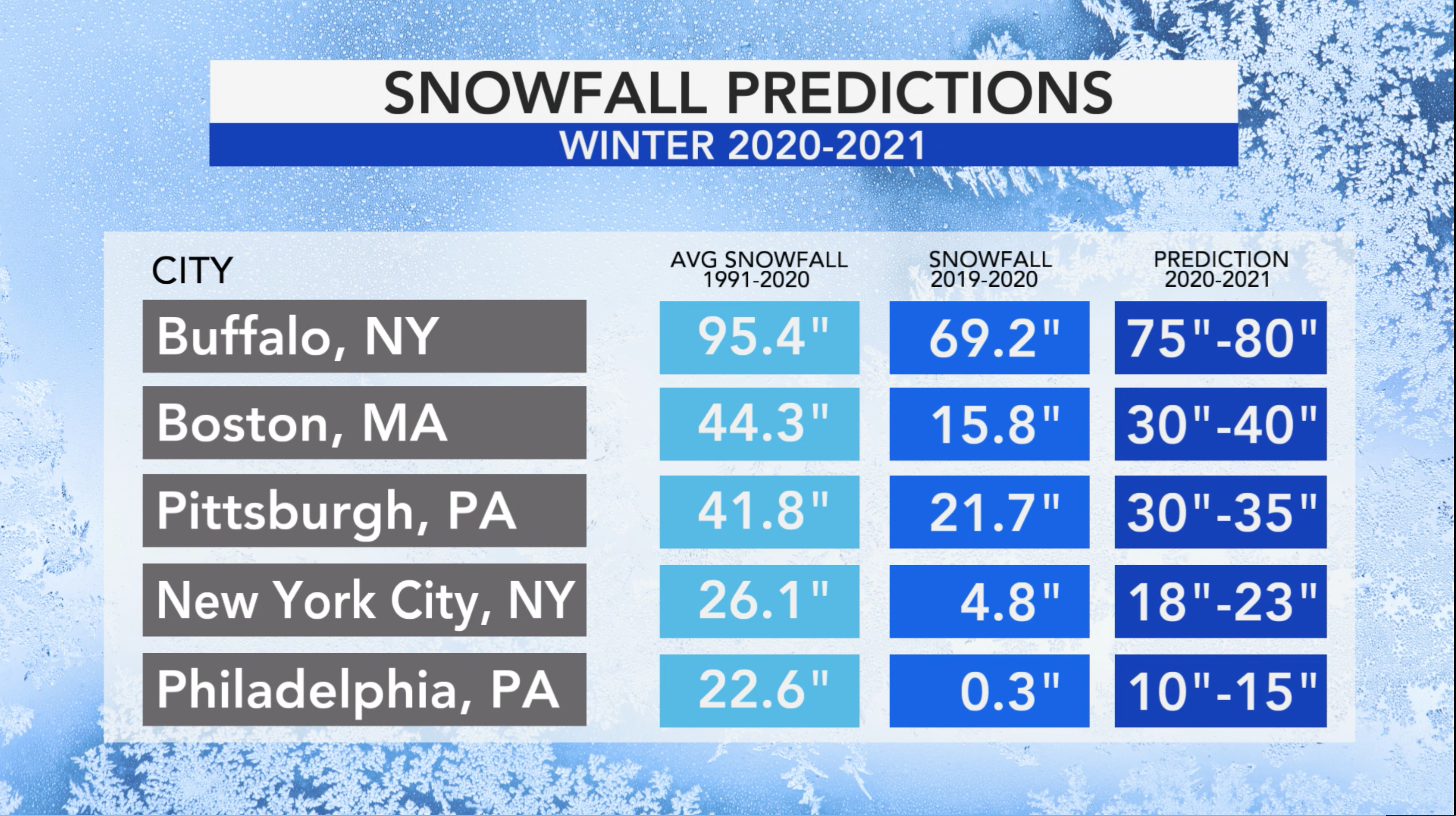
Winter in Southeast
The first part of the winter may be the coldest for the southeastern U.S., as a brief shot or two of cold air has the potential to rush down from the north all the way to the Gulf Coast.
“Early cold may take a run at the eastern U.S. if snow lays in the Ohio Valley and parts of the Tennessee Valley in December,” Pastelok said.
Atlanta, Huntsville, Alabama, Greeneville, South Carolina, and Charlotte and Raleigh, North Carolina, could all be hit by a cold snap to kick off the season. Even Floridians may want to make sure to dig out heavier coats from the closet sooner rather than later.
“There is a small chance for an early-season frost in northern and central Florida perhaps impacting the citrus crop,” Pastelok added.
Temperatures are projected to rebound as the season carries on, paving the way for much warmer conditions through the balance of the winter.
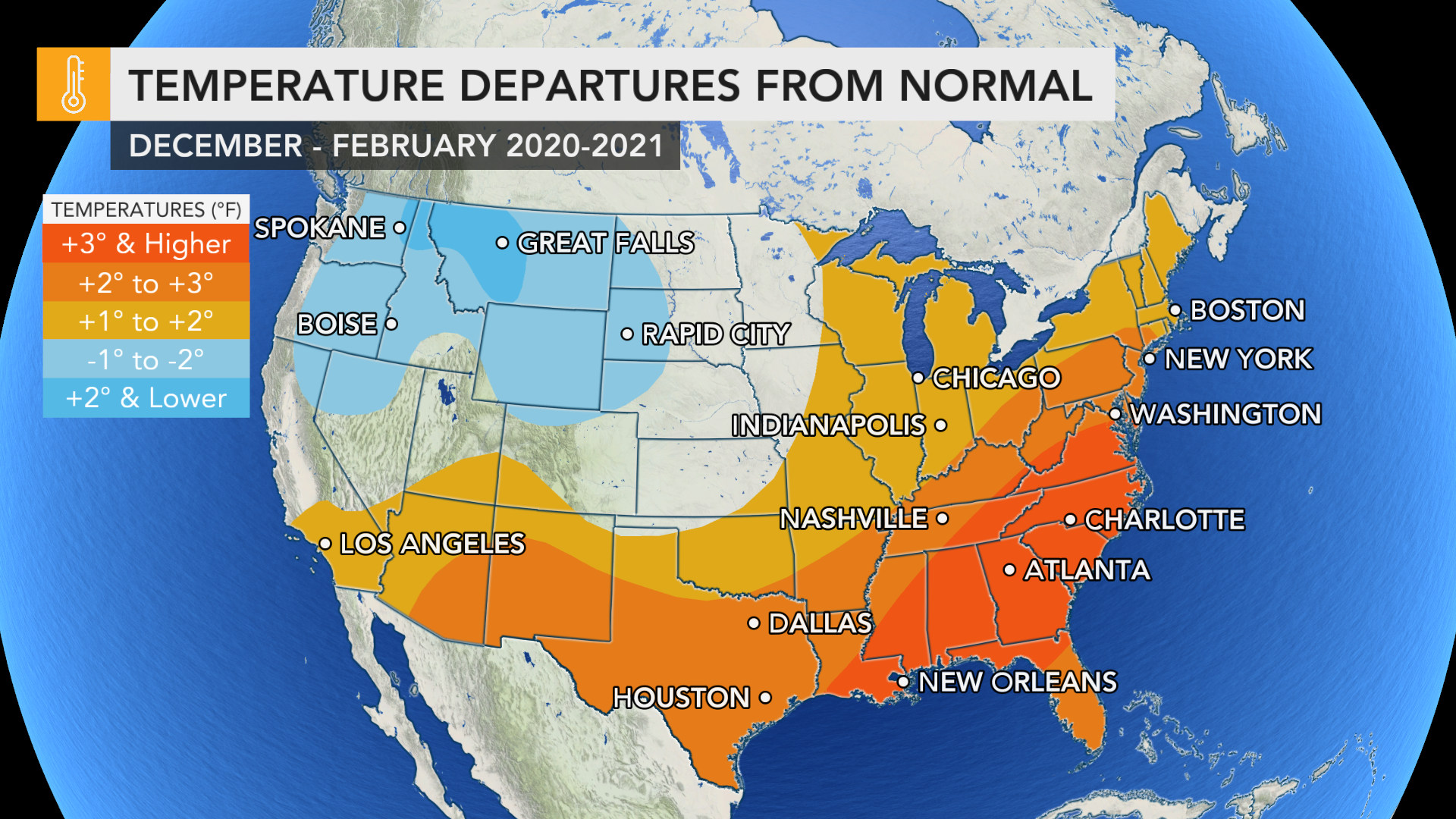
“Near-record warmth [is predicted] at times in the Southeast, occasionally extending into the mid-Atlantic,” Pastelok said.
This extended warmth will be good news for restaurants across the region that have added outdoor seating areas due to the coronavirus pandemic, and could perhaps allow them to utilize the extra space even during the winter months.
Restaurants that do have outdoor seating should still keep a close eye on the weather forecast, not just for temperatures, but also for disruptive storms, especially during the first few weeks of 2021.

Empty outdoor seating for a restaurant and closed hotels are shown, Tuesday, Aug. 11, 2020, in Miami Beach, Florida's famed Ocean Drive on South Beach. (AP Photo/Wilfredo Lee)
“Severe thunderstorms may occur more than usual from the central Gulf Coast to the Southeast in late January and February,” Pastelok said.
Storms could not only spoil an outdoor meal but also bring gusty winds that could damage some of the temporary structures that have been constructed to keep patrons safe from the spread of the new coronavirus.
Plains, Rocky Mountains
The central U.S. experienced a taste of winter as soon as autumn arrived. Meteorological fall began on the first day of September, and just one week later, a winter-like storm dove down across the Plains and northern Rockies, causing temperatures to tumble and delivering snow to the Rockies and some of the foothills. Denver saw the temperature go from a high of 93 one day in early September, to a low of 36 and snowfall the next day.
It may have been a shock to the system for people who live from Montana to New Mexico, but it was a preview of what is to come this winter.
“The middle of the nation may go through some big swings in temperatures, [and] dry and active periods,” Pastelok said. “Periods of subzero cold can drive south down the Front Range of the Rockies, the central and western Plains.”
Snow will be a prominent feature during these big swings, especially over the northern Rockies and into parts of Colorado, which will be beneficial for ski resorts across the region.
“Montana, Utah, Wyoming, and especially the west slopes of Colorado can do quite well” in terms of snowfall, Pastelok said.
There is also the chance for some frequent snowfall in the northern Plains in parts of Nebraska, Iowa, North Dakota, South Dakota, and Minnesota.
Farther south, the chances for snow will be lower, including part of the southern Plains, the southern Rockies and westward into the Four Corners.
Meanwhile, the central Plains will be in the battleground zone, swinging from bitterly cold conditions to spells of milder weather and then back again in less than a week’s time.
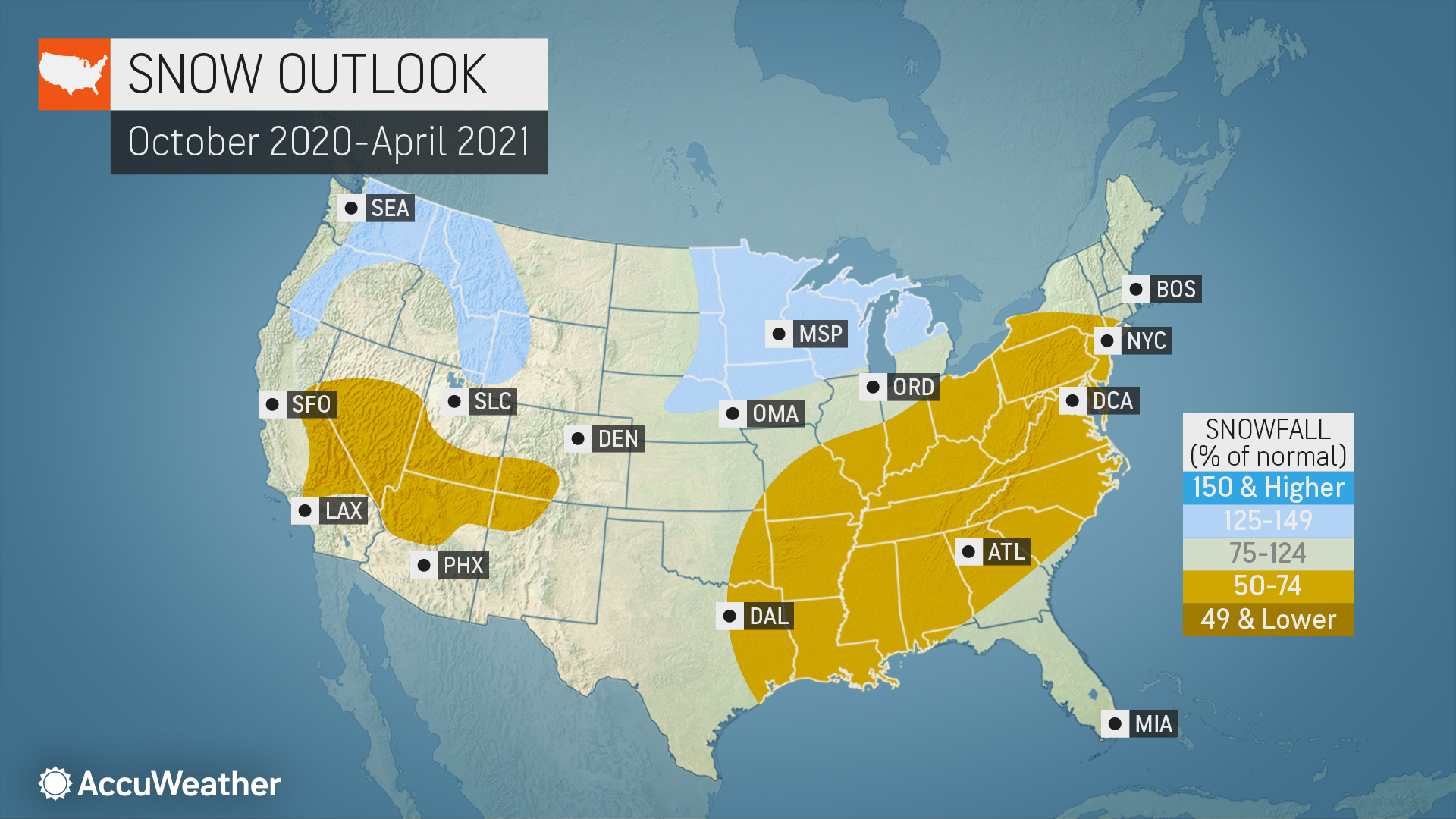
While skiers in the mountains hope for snow to fall early and often, so too will some farmers across the Plains, especially in Kansas, western Oklahoma, and the Texas Panhandle, a major crop area for winter wheat, according to the USDA.
“If there is a lack of snowpack, this can endanger the winter wheat crop,” Pastelok said.
A lack of snow may compound the drought concerns for farmers across the region that could carry over into next year.
Farther west over the Four Corners and into Nevada where drought conditions are even worse, the lower frequency of storms will translate to longer-term drought issues.
According to the United States Drought Monitor, parts of Utah, Colorado, Arizona, New Mexico, and far western Texas are already enduring extreme drought conditions. Some smaller areas are in the grips of exceptional drought conditions, the worst level of drought highlighted by the drought monitor report. Even in the spring when snow in the mountains melts and helps to fill rivers, a below-average snowpack would leave rivers at lower levels.
West Coast
Autumn may feel shorter this year across the Pacific Northwest as wintry weather makes an early entrance across the region.
“Mountain snow and stormy conditions may arrive in late fall for the Northwest, northern California and northern Rockies,” Pastelok said.
Even the Interstate 5 corridor from Medford, Oregon, through Seattle will have several opportunities for accumulating snowfall, potentially even before 2020 draws to a close.
“It may not just be the Cascades that get hit, but interior Northwest areas, even down through Wasatch Mountains central Rockies and northwest Wyoming as well,” Pastelok added.
The waves of storms throughout the upcoming months will help to ease the drought conditions across the region, especially in Oregon where more than 60% of the state is in severe drought and over 30% is in an extreme drought.
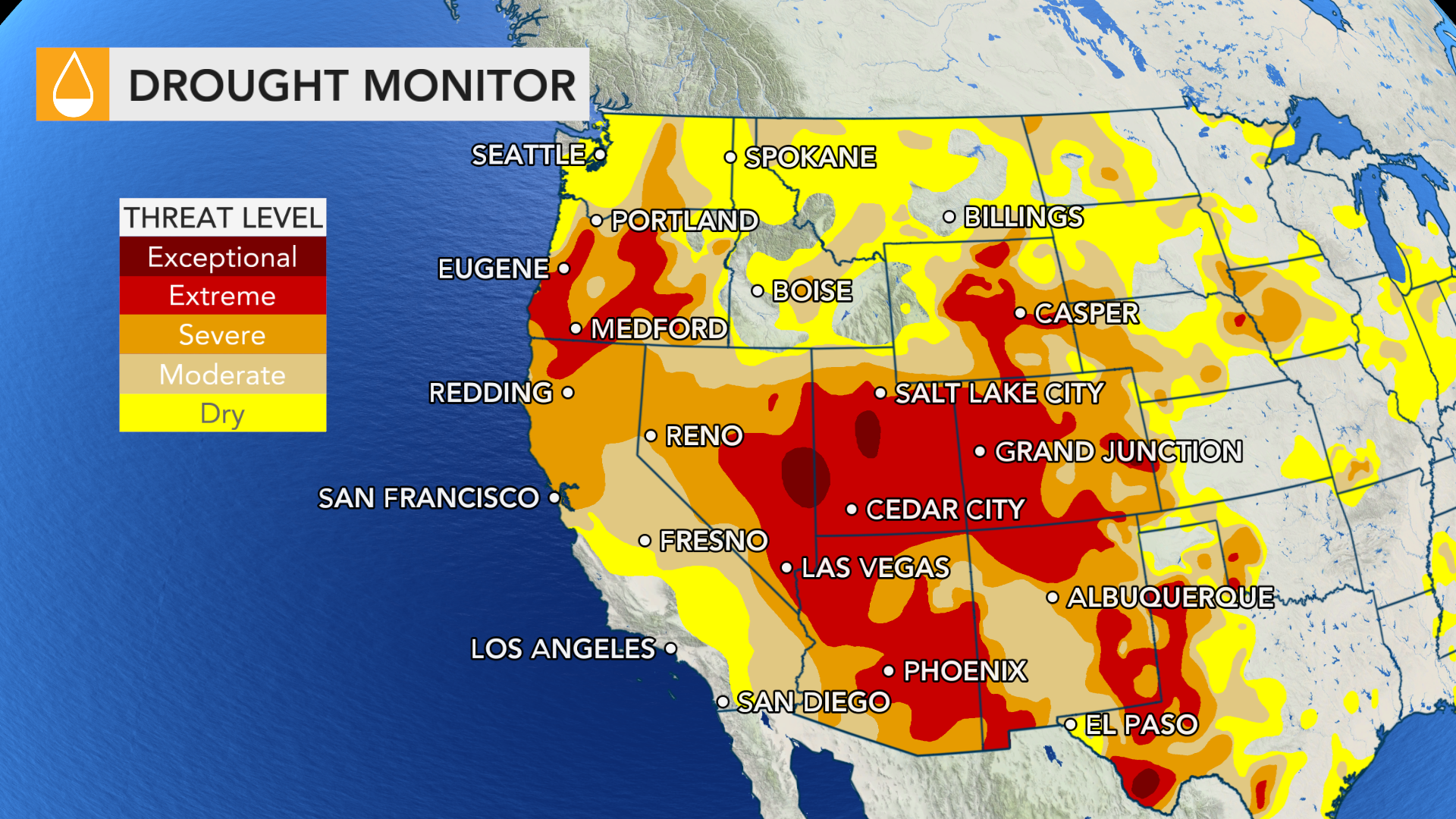
More importantly, the early arrival of winter storms will spell the conclusion to a historic wildfire season that has charred millions of acres across Washington, Oregon and California.
However, after the flames have smoldered, heavy rains could pose an added danger in the burn scars left behind by the fires, especially in the mountainous terrain.
With a lack of healthy vegetation and root systems in place, the charred landscape is more susceptible to flooding and can quickly lead to flash floods and mudslides. In some cases, it can take years for vegetation to become reestablished to bring down the risk of flash flooding near burn scars.
An onslaught of storms tracking over the Pacific Northwest follows the typical trend of winter during La Niña, and the same can be said for the projected weather pattern across the southwestern U.S.
“We are not looking at any active track into Southern California this winter, just occasional rain events may reach these areas in January and February,” Pastelok said.
Similar to the Southeast, restaurants and bars across Southern California, Arizona and into southern Nevada that have constructed new outdoor seating areas amid the pandemic may benefit from the mild and dry pattern.
This is especially true in cities like Phoenix, which this year experienced a record-setting number of days where the temperature reached 110 F, where the heat could be too uncomfortable for outdoor dining.
A dry winter could also be good news for families looking to take a winter vacation to one of the many national parks across the region. People who had to cancel trips earlier in the year because of coronavirus-related restrictions or air quality concerns due to smoke from the large wildfires across the region may find some cooperative weather to travel through parts of the Southwest this winter.
U.S Winter Temperature Averages for Every State
The map here shows how winter temperatures compare across the American states.
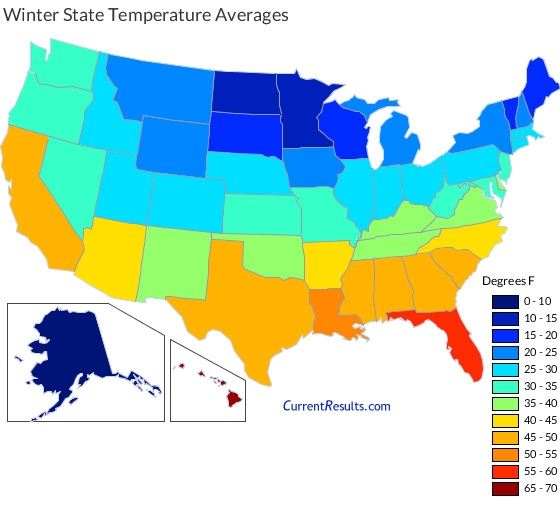 |
| Winter Temperature Averages for Every State |
The temperatures are state-wide averages calculated from temperatures recorded during the months of December, January and February.
Average winter temperatures range from a high of 67.4 degrees Fahrenheit (19.7 degrees Celsius) in Hawaii to a low of 2.6 °F (-16.3 °C) in Alaska. For the entire United States, excluding Hawaii and Alaska, the season averages just above freezing at 33.2 °F (0.7 °C).
The temperatures are based on data collected by weather stations throughout each state during the years 1971 to 2000 and made available by the NOAA of the United States.
| State | Avg ° F | Avg ° C | Rank |
|---|---|---|---|
| Alabama | 46.5 | 8.1 | 7 |
| Alaska | 2.6 | -16.3 | 50 |
| Arizona | 43.6 | 6.4 | 10 |
| Arkansas | 41.5 | 5.3 | 12 |
| California | 46.2 | 7.9 | 8 |
| Colorado | 25.8 | -3.4 | 35 |
| Connecticut | 28.5 | -1.9 | 30 |
| Delaware | 36.1 | 2.3 | 16 |
| Florida | 59.4 | 15.2 | 2 |
| Georgia | 47.8 | 8.8 | 5 |
| Hawaii | 67.4 | 19.7 | 1 |
| Idaho | 25.4 | -3.7 | 37 |
| Illinois | 28.3 | -2.1 | 32 |
| Indiana | 29.4 | -1.4 | 29 |
| Iowa | 21.7 | -5.7 | 39 |
| Kansas | 31.9 | -0.1 | 26 |
| Kentucky | 35.9 | 2.2 | 18 |
| Louisiana | 50.9 | 10.5 | 3 |
| Maine | 16.8 | -8.4 | 47 |
| Maryland | 34.7 | 1.5 | 19 |
| Massachusetts | 27.4 | -2.6 | 34 |
| Michigan | 21.7 | -5.7 | 39 |
| Minnesota | 12.4 | -10.9 | 48 |
| Mississippi | 46.7 | 8.2 | 6 |
| Missouri | 32.3 | 0.2 | 24 |
| State | Avg ° F | Avg ° C | Rank |
|---|---|---|---|
| Montana | 21.2 | -6.0 | 41 |
| Nebraska | 25.7 | -3.5 | 36 |
| Nevada | 32.2 | 0.1 | 25 |
| New Hampshire | 21.1 | -6.1 | 43 |
| New Jersey | 33.0 | 0.6 | 21 |
| New Mexico | 36.1 | 2.3 | 16 |
| New York | 23.3 | -4.8 | 38 |
| North Carolina | 42.1 | 5.6 | 11 |
| North Dakota | 12.2 | -11.0 | 49 |
| Ohio | 29.5 | -1.4 | 28 |
| Oklahoma | 39.1 | 3.9 | 13 |
| Oregon | 34.0 | 1.1 | 20 |
| Pennsylvania | 28.4 | -2.0 | 31 |
| Rhode Island | 31.4 | -0.3 | 27 |
| South Carolina | 46.1 | 7.8 | 9 |
| South Dakota | 19.5 | -6.9 | 44 |
| Tennessee | 39.1 | 3.9 | 13 |
| Texas | 47.9 | 8.8 | 4 |
| Utah | 28.2 | -2.1 | 33 |
| Vermont | 19.4 | -7.0 | 45 |
| Virginia | 36.8 | 2.7 | 15 |
| Washington | 33.0 | 0.6 | 21 |
| West Virginia | 32.8 | 0.4 | 23 |
| Wisconsin | 17.2 | -8.2 | 46 |
| Wyoming | 21.2 | -6.0 | 41 |
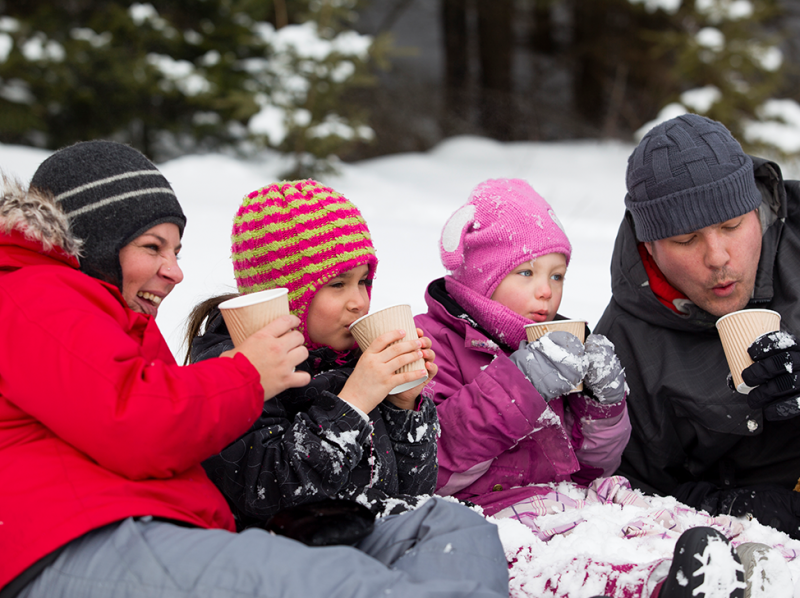 | What & When are the seasons in America? What and When are the seasons in America: The United States is a very large country, and climates and weather can vary greatly by season ... |
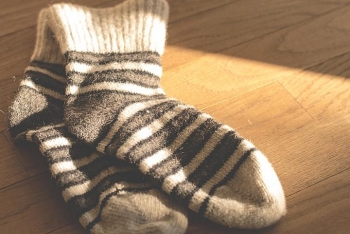 | How to Keep Warm in Winter without Turning Up the Heat How to Stay Warm During Winter: These aren’t “big” projects like buying a new heating system, here are just some inexpensive, resourceful ways to help ... |
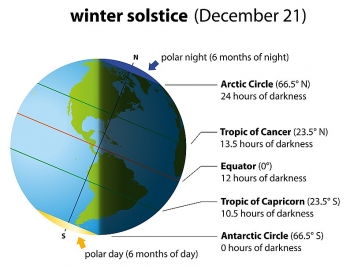 | Winter Begins: Meaning and Acitivities! Winter is coming to every corner of your country. Have you ever paid your attention to the day which marks winter is about to start? ... |
 | Useful tips to say goodbye your dry lips in the winter! Opps, the cold winter is coming, many people complain that they have to suffer from dry, cracked and painful lips. If you are wondering how ... |

